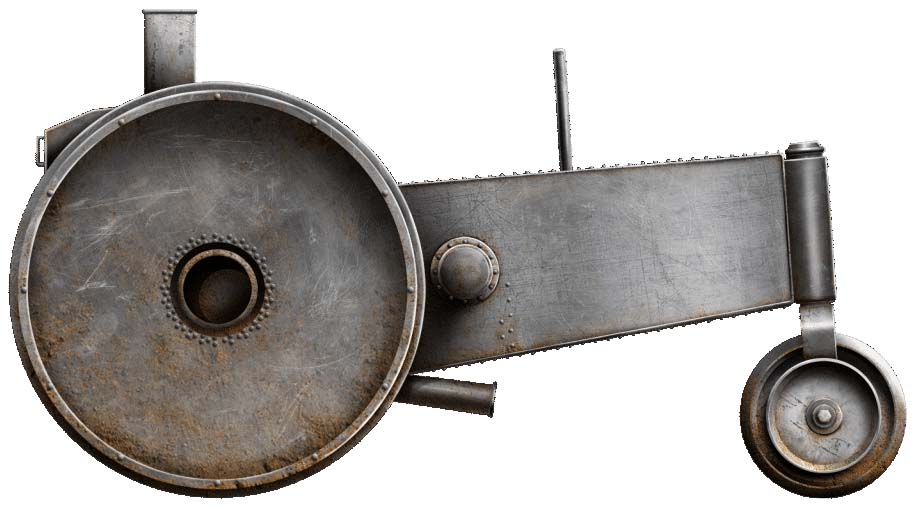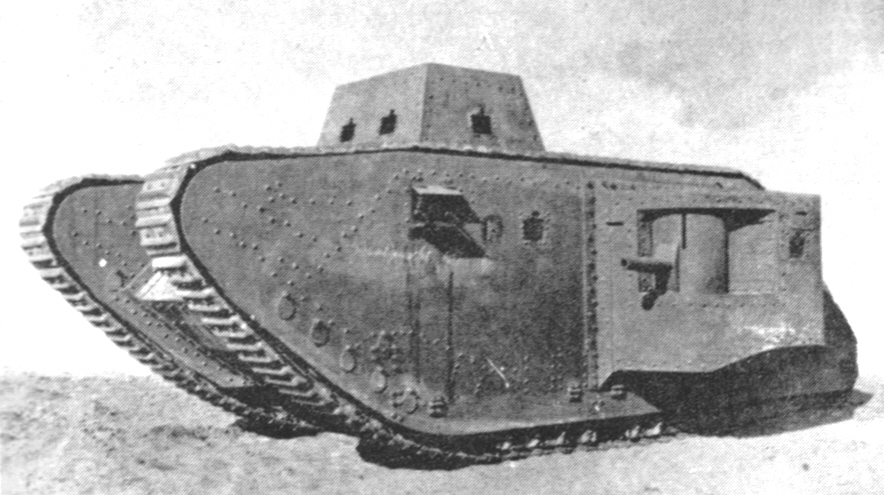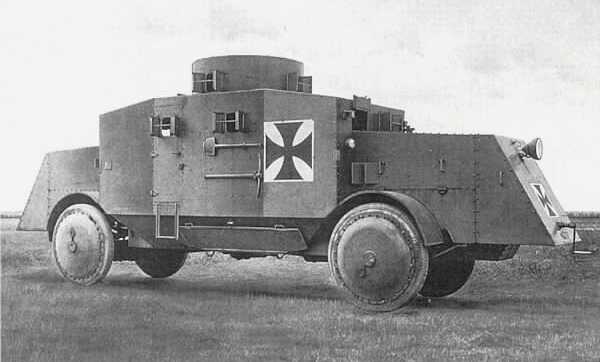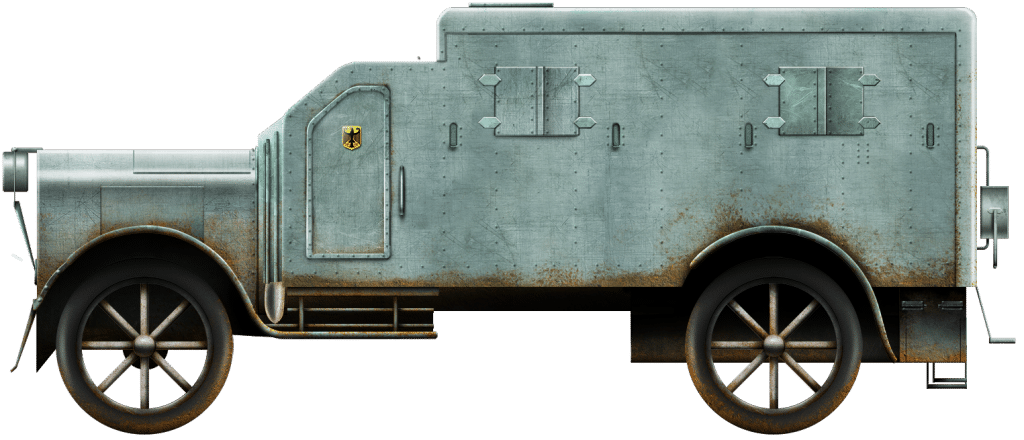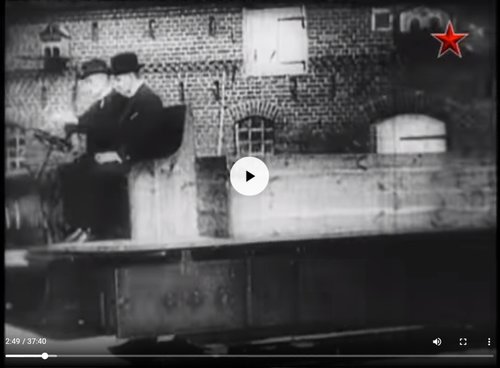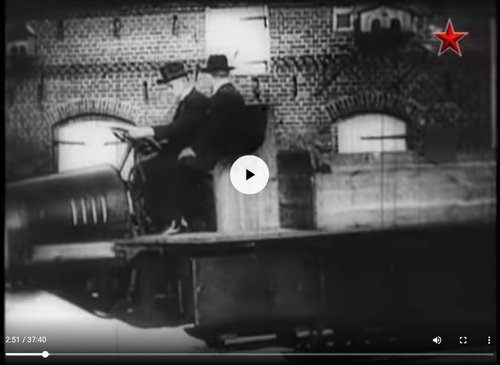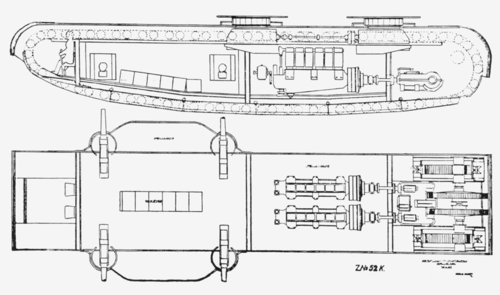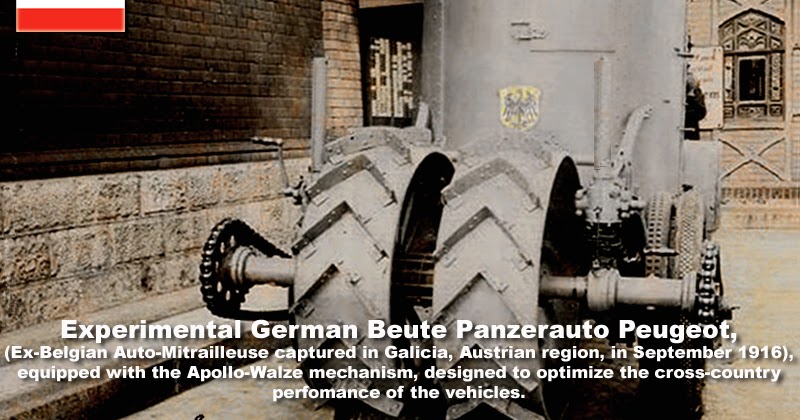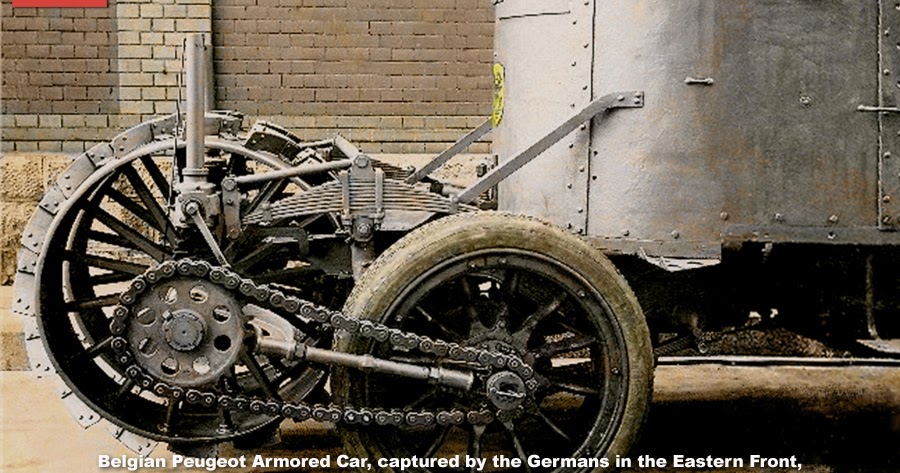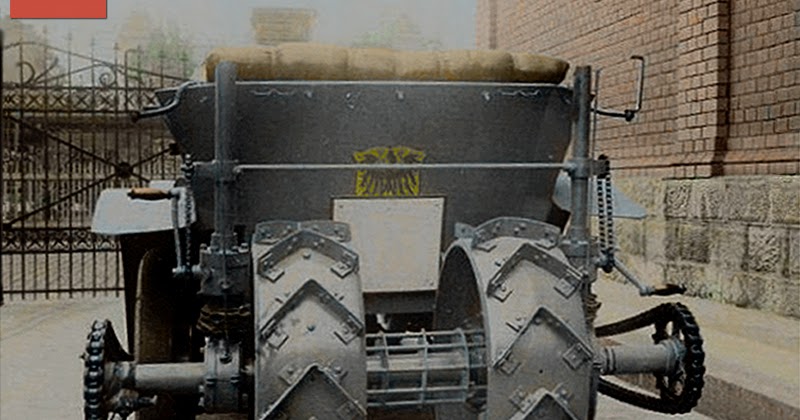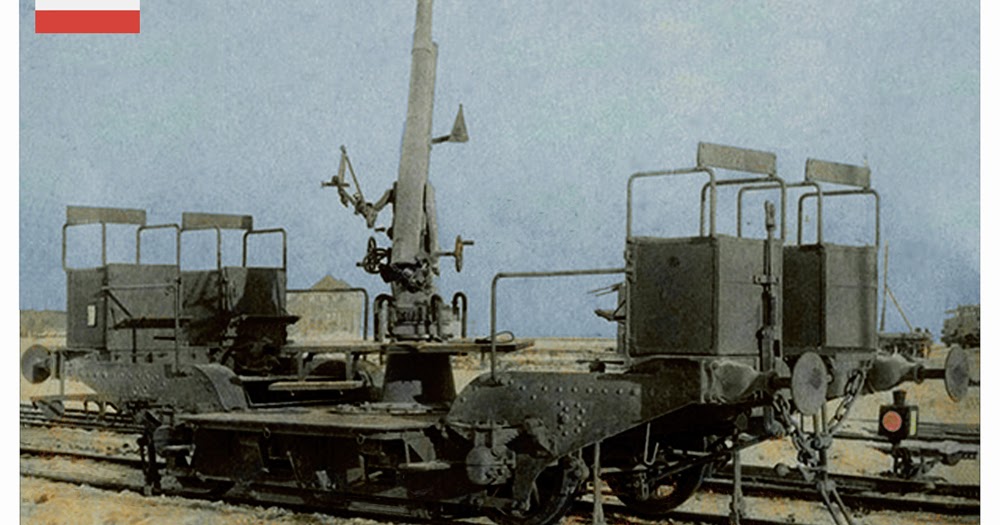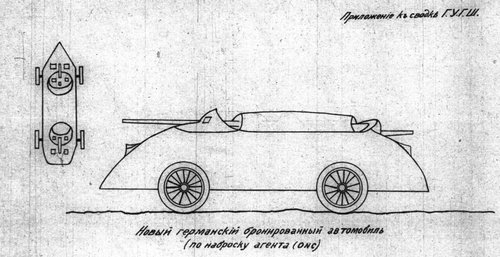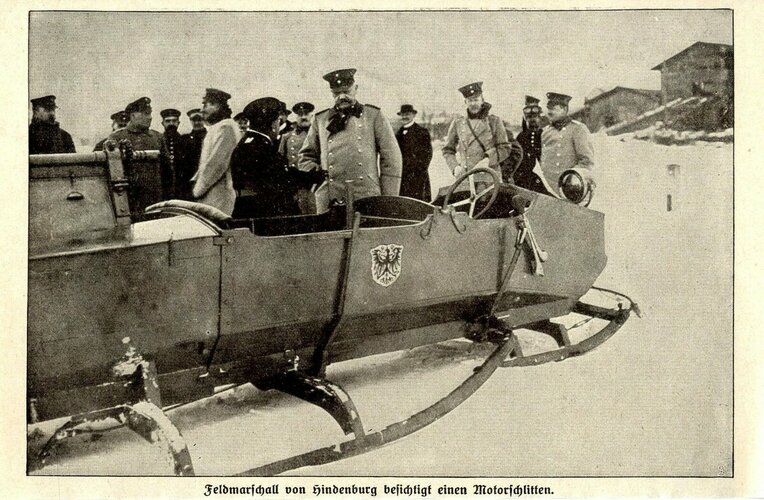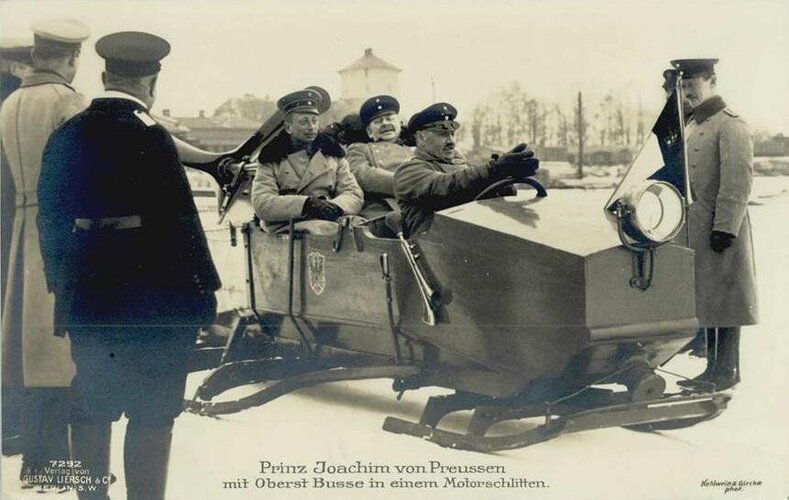Thank you, very interesting.
From google translate.
Year of construction of the first prototype: not completed Stage of completion: project. In the fall of 1918, just a few months before the end of the First World War, a team of engineers, led by designer Joseph Vollmer, presented a draft of a new combat vehicle, the design of which was based on the chassis of the newly built LK-II. Mainly, the hull of the tank underwent significant processing. On the LK-II, the fighting compartment was located behind the engine compartment, which had a positive effect on the crew’s security, but negatively on the forward view. To eliminate this drawback could only completely redo the layout of the tank. On a new machine, called the LK-III, the engine was moved to the rear of the hull. The combat compartment and control compartment, respectively, are located in front. The driver’s seat was in front of the tank commander’s seat and had a small superstructure with three viewing slots. The commander and loader were located in the armored wheelhouse at the rear and slightly higher. For embarkation and disembarkation from the tank, doors on the sides of the wheelhouse served. The LK-III chassis was completely borrowed from the LK-II. It was fastened between two parallel walls, and five trolleys, four road wheels each, were mounted to the frame from each side, and another trolley was fastened in front and performed the function of a persistent one. The guide wheel was located in the bow and was equipped with a screw mechanism for tensioning the tracks. The drive wheel, respectively, was installed at the rear and had a tooth type of gearing. There were no supporting rollers, and the suspension of the support trolleys was blocked, on coil springs, so that it was not necessary to count on special smoothness of travel. The trucks also planned to use standard, large-sized ones, with a pitch of 140 mm and a width of 250 mm. The number of tracks in one chain is 74 pieces. The undercarriage was completely covered by side screens with an armor thickness of 8 mm. On both sides there were oval cutouts for dumping dirt from the upper branch of the caterpillar chains. Apparently, in the production of LK-III, it was also planned to use automotive units, so that the brand of the engine could be any. We can say for sure that the type of engine was gasoline, and its power could vary between 50-60 hp. The tank's transmission included: the main clutch, a 4-speed automobile-type gearbox, a longitudinal shaft with bevel gears, disk clutches and tape (?) Brakes. Armament LK-III, according to the most common version at the moment, could consist of a 57-mm gun or a 20-mm automatic Becker gun (Becker Flieger Kanone). However, the possible presence of a machine-gun variant cannot be rejected. An order to build a series of 1000 LK-III tanks at once was received in October 1918, but, of course, it was not possible to complete it even in a partial volume. A prototype tank was not even built. After the war ended, the project did not receive further development, since they considered the modernization of the LK-II tank, which in 1919-1921, to be a more reliable way. mass-produced and exported. [The alleged appearance of the light tank LK-III equipped with a 57-mm cannon in the tower] Sources: Fedoseev S.L. Illustrated reference book “Tanks of the First World War”. Moscow. AST \ Astrel. 2002 DESIGN TACTICAL AND TECHNICAL CHARACTERISTICS OF THE LIGHT TANK Leichte Kampfwagen LK-III of the 1918 model. COMBAT WEIGHT ~ 8500-9000 kg CREW, pers. 3 OVERALL DIMENSIONS Length, mm ~ 5100 Width, mm ~ 1950 Height, mm ~ 2700 Ground clearance, mm? WEAPONS one 57-mm cannon in the wheelhouse or in the ammunition tower? Aiming devices optical sight RESERVATION forehead of the body - 14 mm side of the body - 14 mm of feed - 14 mm of the roof - 8 mm of the bottom - 8 mm ENGINE Daimler-Benz, carburetor, 4-cylinder, 60 hp TRANSMISSION of mechanical type RUNNING PART (on one side) 20 road wheels, 4 “road wheels”, rear drive wheel, small track with steel tracks SPEED ~ 16 km / h on the highway OVERCOMING OBSTACLES Angle of rise, hail. 41 ° Wall height, m? Wade depth, m 0.50 Ditch width, m 2.00 COMMUNICATIONS
Source:
http://aviarmor.net/tww2/tanks/germany/lk-3.htm
 aviarmor.net
aviarmor.net

 tanks-encyclopedia.com
tanks-encyclopedia.com
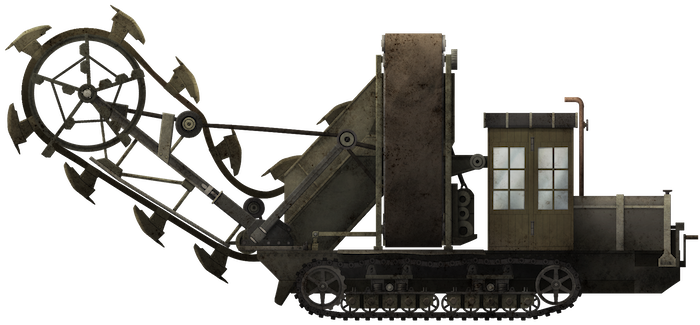
 tanks-encyclopedia.com
tanks-encyclopedia.com
 armchairhistory.creativereactor.ru
armchairhistory.creativereactor.ru

 aviarmor.net
aviarmor.net

 tanks-encyclopedia.com
tanks-encyclopedia.com

 tanks-encyclopedia.com
tanks-encyclopedia.com
 armchairhistory.creativereactor.ru
armchairhistory.creativereactor.ru

